#Local Building Surveyors
Explore tagged Tumblr posts
Text
Home Inspections Made Easy - Partnering with Local Building Surveyors

When it comes to buying or selling a property, the importance of a thorough home inspection cannot be overstated. A home inspection serves as a crucial step in the real estate process, helping prospective buyers make informed decisions and ensuring sellers are aware of their property's condition. However, navigating the complexities of home inspections can be daunting. This is where partnering with local building surveyors can simplify the process, providing expertise and peace of mind.
The Role of Building Surveyors
Building surveyors are trained professionals who specialize in evaluating the condition of buildings and ensuring compliance with building codes and regulations. They possess in-depth knowledge of construction practices and can identify potential issues that might not be apparent to the untrained eye. Their expertise extends beyond mere aesthetics; they can detect structural problems, plumbing issues, electrical faults, and even pest infestations. By engaging a local building surveyor, homeowners can gain insights that are critical to the value and safety of a property.
Why Partner with Local Experts?
Local Knowledge and Expertise: Local building surveyors are familiar with the specific characteristics and common issues found in properties within their region. They understand the local building codes, climate impacts, and typical construction practices. This localized expertise enables them to provide more relevant and accurate assessments, ensuring that potential buyers or sellers are fully informed.
Personalized Service: Local building surveyors often provide a more personalized approach compared to larger firms. They are typically more accessible and can tailor their services to meet individual needs. This level of attention can make the inspection process smoother and less stressful.
Comprehensive Reporting: A well-conducted home inspection results in a detailed report that outlines the property's condition, highlights potential problems, and offers recommendations for repairs or maintenance. Local surveyors are skilled at producing clear, concise reports that are easy to understand, empowering clients to make informed decisions.
Cost-Effective Solutions: While some might view hiring a building surveyor as an unnecessary expense, it can ultimately save money in the long run. Identifying issues before a purchase can prevent costly repairs down the line. Additionally, local surveyors often have established relationships with contractors and can recommend reliable professionals for necessary repairs.
Mitigating Risks: Buying a home is one of the most significant investments many people will make in their lifetime. Partnering with a local building surveyor mitigates the risks associated with unforeseen issues that could arise after purchase. Their expertise can prevent buyers from making decisions they might regret later.
The Inspection Process
Engaging a local building surveyor typically begins with an initial consultation, during which the client discusses their needs and concerns. The surveyor then schedules an inspection, during which they will thoroughly examine the property. This includes evaluating the structural integrity, checking for signs of water damage, assessing electrical and plumbing systems, and more.
After the inspection, the surveyor will provide a detailed report, often accompanied by photographs and recommendations for any necessary repairs or follow-ups. This report serves as a valuable tool for negotiation in a real estate transaction, allowing buyers to request repairs or adjustments in price based on the findings.
Conclusion
Partnering with local building surveyors streamlines the home inspection process, offering invaluable support to both buyers and sellers. Their expertise not only enhances the understanding of a property’s condition but also protects investments by identifying potential issues early on. In the ever-changing real estate market, having a knowledgeable partner can make all the difference, ensuring a smoother transaction and greater peace of mind. Whether you are entering the market as a buyer or looking to sell, collaborating with a local building surveyor is a wise decision that can save time, money, and stress in the long run.
0 notes
Text
How to Choose the Right Construction Cost Estimating Service in Melbourne
Choosing a construction cost estimating service isn’t just about who offers the lowest price—it’s about selecting a partner who understands your project’s scope, budget, and local market. In Melbourne, the right estimator can be the difference between a smooth project and a financial headache.
Step 1: Understand Your Project Needs
Before comparing estimators, know what type of service you require:
Residential, commercial, or industrial?
Full project estimate or quantity takeoff only?
One-time estimate or ongoing cost planning?
Step 2: Check Their Local Experience
The Melbourne market is unique. Cost patterns differ between inner-city, suburban, and outer metro areas. An experienced local estimator knows current rates, regional construction issues, and council processes.
Step 3: Ask About Tools and Methods
Modern estimators should be using digital tools like CostX, Cubit, or Bluebeam. These enable better accuracy, traceability, and integration with your design team.
Step 4: Evaluate Credentials and Qualifications
Look for membership with AIQS or RICS, and request samples of past estimates. Credentials signal professionalism and accuracy.
Step 5: Read Reviews and Ask for References
Check Google reviews, testimonials, and even reach out to architects or builders who’ve worked with the estimator before.
FAQs
How soon should I hire an estimator? Early is best—ideally during concept or schematic design stages.
Do estimators work directly with designers or architects? Yes. A collaborative estimator can help align design decisions with budget from day one.
Can I switch estimators mid-project? While possible, it’s best to stay with one for consistency. Choose wisely from the beginning.
Are cheaper services less reliable? Not always, but be wary of extremely low quotes—some may cut corners or offer minimal detail.
Do I need a contract with the estimator? Yes. It should outline deliverables, timelines, fees, and scope.
Conclusion
The right construction cost estimating service in Melbourne is one that blends local knowledge, technical precision, and professional integrity. Take the time to compare services, check credentials, and ensure the provider aligns with your project goals. An informed choice can protect your investment from the start.
#how to choose estimator Melbourne#best construction estimating company in Melbourne#selecting the right estimator for project Melbourne#hire expert cost estimator Melbourne#estimator for commercial build Melbourne#trusted Melbourne residential cost estimators#what to ask estimator before hiring Melbourne#Melbourne estimator reviews and ratings#where to find licensed estimator Melbourne#Melbourne cost estimator with AIQS certification#Melbourne quantity surveyor vs estimator#estimator for architectural budgeting Melbourne#estimator working with designers Melbourne#how to compare estimating services Melbourne#cost estimator who uses CostX Melbourne#Melbourne project cost analysis services#Melbourne estimator for permit budgeting#local estimator qualifications Melbourne#estimator near me in Melbourne#Melbourne estimator referrals from builder#cost consultant for construction planning Melbourne#affordable estimator without compromising quality Melbourne#checklist for hiring estimator Melbourne#understanding Melbourne cost planning experts#estimator agreement terms Melbourne#estimator for early design budget Melbourne#experience needed for estimator Melbourne#signs of reliable estimator Melbourne#Melbourne estimator for multi-unit developments#choosing estimator for renovation Melbourne
0 notes
Text
Nautilus update! I’ve written more in-depth about all of this on the gofundme page and our social media, so I won’t get into the nitty gritty detail here as well, but I wanted to share the news here, for anyone wondering how things are going! Under a cut because it’s long, but tl:dr is we're moving forward, and we'll be okay.
Good news first: The owner of another local sailing company had put one of their boats up for sale the same week as the accident, and after the surveyors told us to expect the worst, he got in touch. She’s now ours, and we’ll be sailing again next summer! We were lucky enough to work on her in the past, and her previous owner wanted has told us he’d initially meant to offer her to us at the end of this season. With a working boat, we can keep our company going, which in turn means we have a means of making money that still allows us the flexibility to work on repairs, and deal with matters in the shipyard as they arise. (The marina also had a multi-year wait for commercial boats, so we were worried about what would happen if we had to bow out for a few years!) We're extraordinarily lucky and so, so grateful - this literally would not have been possible without the fundraiser, and the safety net it gave us, and the way our whole community has supported us. Without exaggeration, it changed our lives. I will never be able to fully express how grateful I am.
Nautilus is written off as a loss, which we've been expecting. They offered us the chance to buy her as salvage, which we obviously accepted. So insurance wrote us a payout for what she’s insured for, plus reimbursement for getting her hauled and towed, less the value of her as salvage. Because she’s a loss, we have to pay off the loan that we took out this spring to buy her. After that's done, we'll have enough left over from the payout check to launch the new boat next spring (insurance/marina fees/haul and tow) which in turn leaves us free to use the proceeds of the fundraiser to make a start on repairs this winter! In the meantime our insurance is pursuing subrogation: essentially (as I understand it) after paying us out of their pocket, they are going after the other insurance for reimbursement. If we do see any lost income, it would be through this process, but we’ve been told several times it will take months - we don’t know if that means ‘december’ or ‘next august’, and don’t know how much, so we’re crossing our fingers but not making any plans around it. The crisis point was these last two months, and honestly the fundraiser got us through it - now we have our feet under us again, it would definitely be welcome but our stability and livelihood isn't hanging on it, so we can afford to wait.
Repairs - rough estimate from the survey is $83k, but half of that is labor costs. We can do much of the labor ourselves, which should lower it a bit. There are obviously areas where we'll need experts (welding!!), but we have the skills for a lot of what has to be done. Right now we’re getting the boats covered for cold weather, picking up some odd jobs around the shipyard, and clearing room in the woodshop to build a new main mast - that’s the project this winter! We are also going to start tearing up the teak deck to access the damaged fiberglass below, and figure out what, if anything, can be salvaged from the wreck of the mast/rigging (the jib furler sheared in half, but the sail itself made it out with only four small, easily patched punctures! Which is frankly a miracle, given how it was literally jammed through the mast). Anything that seems sound will be checked over by an expert, and a lot of it might still be too stressed to safely use, but after months of looking at the wreck of the thing, it’s honestly just a relief to be able to go through and start taking pieces apart.
Tl:dr is we’re going to be okay. Money is tight, we’re living with family and working 6 days a week, but we’ll be on the water sailing again in May, our company will survive, and we’re hoping to have Nautilus fixed in two or three years. Just wanted to share that with you all; I'm really glad to finally have some good news to offer. It's not easy but it's better, and we're going to get through it, pretty much 100% because of everyone who has been so kind to us both. Thank you all so, so much for every single kind word and share and donation. I am never going to be able to say how much it has meant to me, and what a difference it has made. I won’t be posting much more about it on here now that we're back on our feet, but if anyone wants to keep updated, detailed news about Nautilus repairs will go on the gofundme page, and our instagram will have lighter posts about both boats, repairs, and the 2025 season.
144 notes
·
View notes
Text
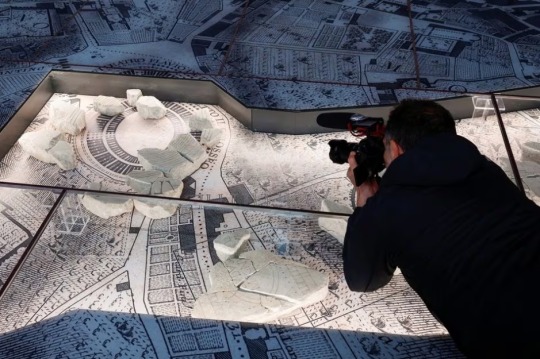
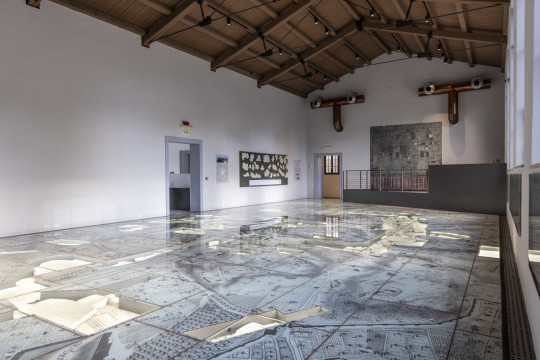
Ancient Monumental Marble Map of Rome on Display After 100 Years
A marble map of ancient Rome, that hasn't been put on public view for almost 100 years, is getting its very own museum within sight of the Colosseum.
The Museum of the Forma Urbis, enclosed within a new archaeological park on one of Rome's famous seven hills opens on Friday -- the latest offering from a city that is eager to broaden its attraction for growing hordes of tourists, according to Reuters.
"This is a beautiful day. We are opening an archaeological park in an extraordinary part of the city and a new museum showcasing a masterpiece which has not been visible for about a century," said Rome Mayor Roberto Gualtieri.
"We want a city where the museums and the streets are linked, and where people, while walking around, can fully appreciate and enjoy the beauty, but also better understand how our city has been transformed."
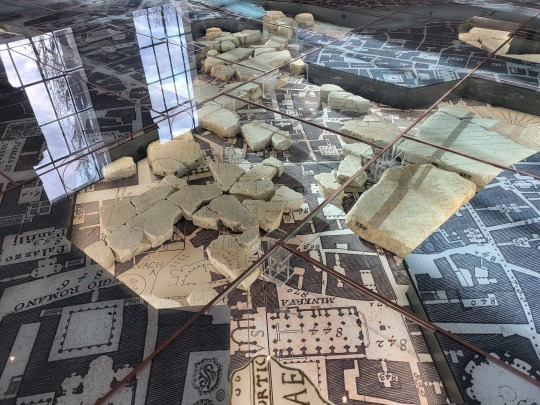

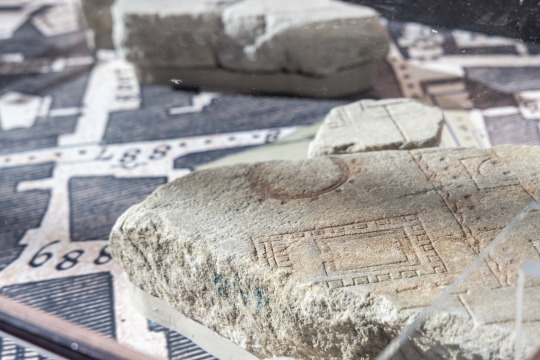
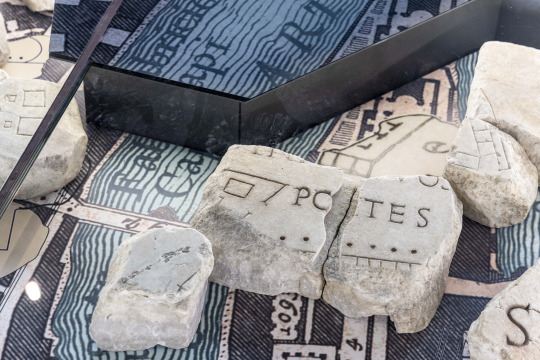
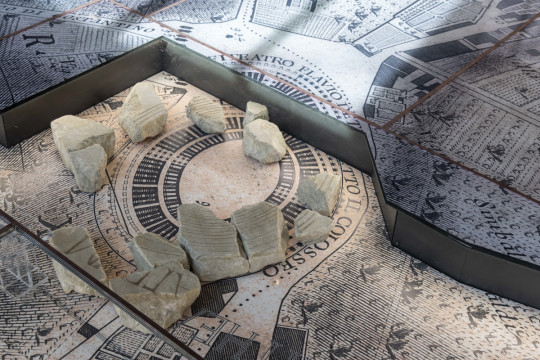
The Forma Urbis was a monumental, highly detailed marble map of ancient Rome carved during the reign of the Emperor Septimius Severus between 203 and 211 AD, engraved onto 150 separate slabs and measuring 18 by 13 metres (60 by 43 feet).
It was displayed on a wall in the ancient city, but over the centuries it gradually disintegrated, with locals using some slabs for new buildings.
During excavations in 1562, fragments were recovered and scholars estimate around 10% of the whole has survived, including sections showing the Colosseum and Circus Maximus, as well as floor plans of baths, temples and private houses.
The huge carving has proved a valuable resource for understanding the layout of ancient Rome, but all the remaining pieces have not been shown together since 1924.
In its new, innovative setting, the fragments have been laid out on a reproduction of a famous map of Rome created in the 18th century by the surveyor Giovanni Battista Nolli, who is credited with making the first accurate street plan of Rome.
The marble chunks lie on top of the Nolli map, showing their relation to the developing Renaissance city.


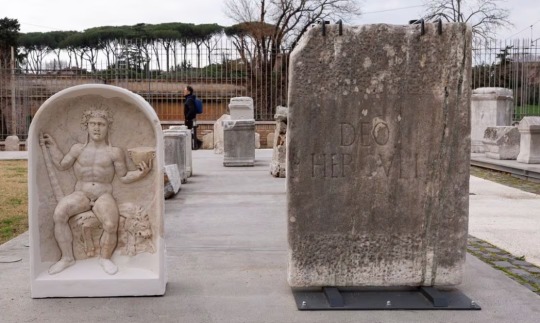

Outside the museum, in the open-air park on the side of the Caelian Hill, archaeologists have out laid out walkways lined with ancient Roman grave markers and marble columns found in excavations around the city in recent decades.
"The Caelian Hill, one of the seven hills of ancient Rome, has remained in the shadows, unknown and inaccessible for a very long time. Today, we are finally giving it back to the city," said Claudio Parisi Presicce, who oversees Rome's cultural heritage.
"The hill has a special importance because it is what unites the monumental area of the Imperial Forums, the Roman forum, the Colosseum and the area of the Appia Antica," he said.
The 5-million-euro ($5.5 million) project is part of a broader refurbishment of Rome, which has seen a tourism boom since the end of the COVID-19 pandemic and is expected to be submerged by visitors in the 2025 Roman Catholic Holy Year.
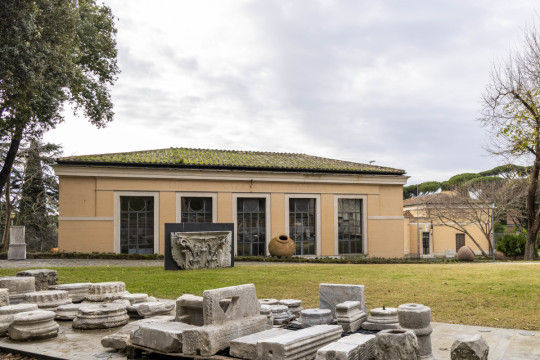
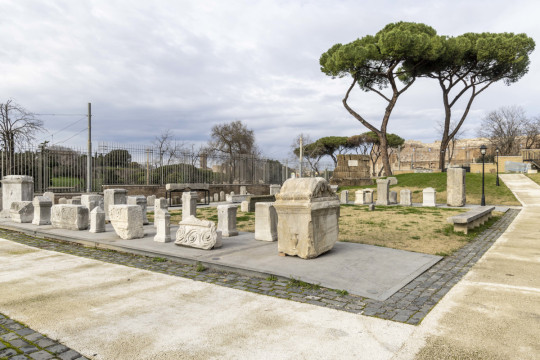
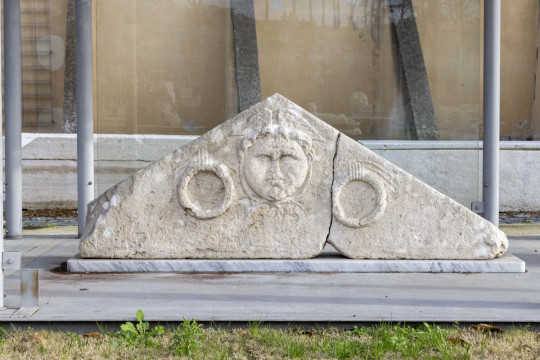

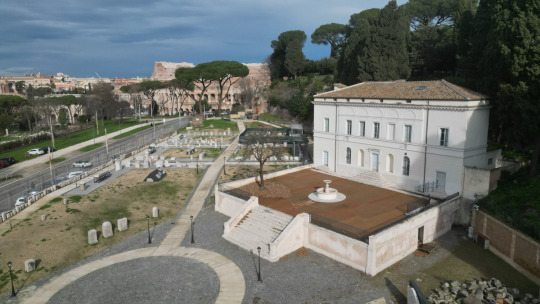
#Ancient Monumental Marble Map of Rome on Display After 100 Years#The Museum of the Forma Urbis#The Forma Urbis#Emperor Septimius Severus#ancient artifacts#archeology#archeolgst#history#history news#ancient history#ancient culture#ancient civilizations#ancient rome#roman history#roman empire#roman emperor#roman art
162 notes
·
View notes
Text

















Woodlawn House
Hi guys!!
I'm sharing Woodlawn House. This is the 14th building for my English Collection.
It is in fact an Irish house, built before Ireland became independent.
I had to make some modifications and had no images to copy interiors.
History of the house: The history of Woodlawn goes back before recorded history, with the pre-medieval Diarmuid and Gráinne mound, currently undated.
Originally known as Mota or sometimes Moote, the village was renamed by Lord Ashtown, apparently for the simple reason that his post often ended up in Moate instead of Mota. The countryside was flat, boggy in places but largely well-suited to farming and was used for tillage up until the 1930s when it was put to pasture.
Forestry is more recent addition to the landscape, with Coilte owning large tracts of the old Woodlawn estate.
Woodlawn House itself is a three storey palladian style country house of about 30,000sq.ft. originally built around 1760 by Frederick Trench, the first Baron Ashtown. It was extensively remodelled in 1860 by his son the second Baron Ashtown to plans drawn up by James F. Kempster, the local County Surveyor. It was also the second Baron Ashtown who was responsible for the building of the railway station and ensuring that the railway line passed through the estate as it was being constructed.
The house was finally sold by the fourth Lord Ashtown to Frederick Le Poer Trench in 1947. The current owner is engaged in planning a complete restoration of the house and estate.
For more info: https://www.woodlawn-estate.com/
------------------------------------------------------------------------------
Distribution





This house fits a 50x50 lot (I think if you lose the woods and entrance it can fit a 50x40 too)
I furnished just the principal rooms, so you get an idea. The rest is unfurnished so you create the interiors to your taste!
Hope you like it.
You will need the usual CC I use:
all Felixandre cc
all The Jim,
SYB
Anachrosims
Regal Sims
King Falcon railing
The Golden Sanctuary
Cliffou
Dndr recolors
Harrie cc
Tuds
Lili's palace cc
Please enjoy, comment if you like it and share pictures with me if you use my creations!
Early access: 07/18/2024
Download: https://www.patreon.com/posts/106463811
#sims 4 architecture#sims 4 build#sims4#sims 4 screenshots#sims4play#sims 4 historical#sims4building#sims4palace#sims 4 royalty#ts4#ts4 download#ts4 simblr#ts4 screenshots#ts4 gameplay#ts4 legacy#the sims 4#sims 4#sims4 build#sims 4 legacy#sims 4 gameplay#thesims4#sims4englishestates#english estate
76 notes
·
View notes
Text
The Further Adventures Of Cincinnati’s Curious Real Estate Investors And Scoundrels
Nicholas Longworth’s Still When he first arrived in Cincinnati in 1803, Nicholas Longworth was almost penniless. Twenty years later, he was the second-richest man in America, behind only John Jacob Astor. In 1830, he purchased what is now the Taft Museum as his home. Longworth’s rise to wealth began with a copper still. As a young attorney, he was engaged to defend a man accused of stealing horses. The defendant had no cash to pay the lawyer, but did have a copper still and a horse. Both were entrusted to the care of Joel Williams who, in addition to working as a surveyor, maintained a local tavern. Longworth suspected that both still and horse might be stolen but accepted the still as payment, the horse being more likely to be repossessed. Longworth won the case, his client rode off on the horse, and the attorney visited the tavern to collect his still. He discovered Williams boiling sour mash and unwilling to part with the device. Willliams offered instead fourteen and a half acres out on Western Row near Eighth Street. Longworth agreed. By 1859, that plot was worth $750,000.

Iron Chest Company By the 1830s, despite often violent repression, Cincinnati developed a small but influential Black middle class. Among these citizens were Samuel T. Wilcox, owner of the Dumas House, the only hotel catering to Black guests; Gideon Mercer Langston, who kept a livery stable and John Woodson, a barber who served as superintendent of a school for African American children. In September 1838, these men and others formed a mutual aid society called the Iron Chest Company. Each member contributed one dollar every week and with this fund the company built three brick buildings that they rented to white tenants. The company also helped fugitive Black people escape from slavery and assisted their less fortunate neighbors.
Oh, Susanna! Among the most unusual property transfers in Cincinnati was accomplished in 1902, when Susanna Gibbs transferred a parcel of land at the intersection of Hewitt and Fairfield in Evanston, valued at $6,000, to Susanna Turner. The identical first names were no coincidence. Susanna Gibbs and Susanna Turner were one and the same person. She was born Susanna Turner in 1825 and became Susanna Gibbs when she married Joel Gibbs in 1849. The couple separated in the 1860s and eventually divorced. Her ex-husband took poison and killed himself in 1875 and neighbors said Susanna Turner/Gibbs had acted strangely ever since. When she herself died a few years later, it was hypothesized that Susanna had converted all of her property to her birth name to shield it from her son, a notorious gambler and spendthrift.
Van Tress Empire A farm boy from Waynesville, Roy Van Tress rose quickly from rags to riches. It is too bad that his rise was a fabric of scam and sham, lies and outright larceny. Tress wanted to build an empire out west, centered around a city named for himself. To establish this western empire, Van Tress incorporated in 1910 the McAlester Real Estate Exchange with offices in downtown Cincinnati at the Union Central Life Building. Van Tress enticed customers with options to purchase some of the Indian Lands the U.S. government had grabbed in Oklahoma. Van Tress promised oil rights, timber reserves and lush farmlands for a few dollars an acre. Investigators soon discovered that Van Tress sold options to buy twice as much land as he had authority to sell and that most of the land he actually had rights to were barren, already timbered, and thoroughly devoid of any oil reserves. Some were essentially vertical plots on the side of steep bluffs. Van Tress was arrested in 1913 and spent the next decade in court. The interminable litigation took its toll and Van Tress died from pneumonia complicated by anemia in 1924.
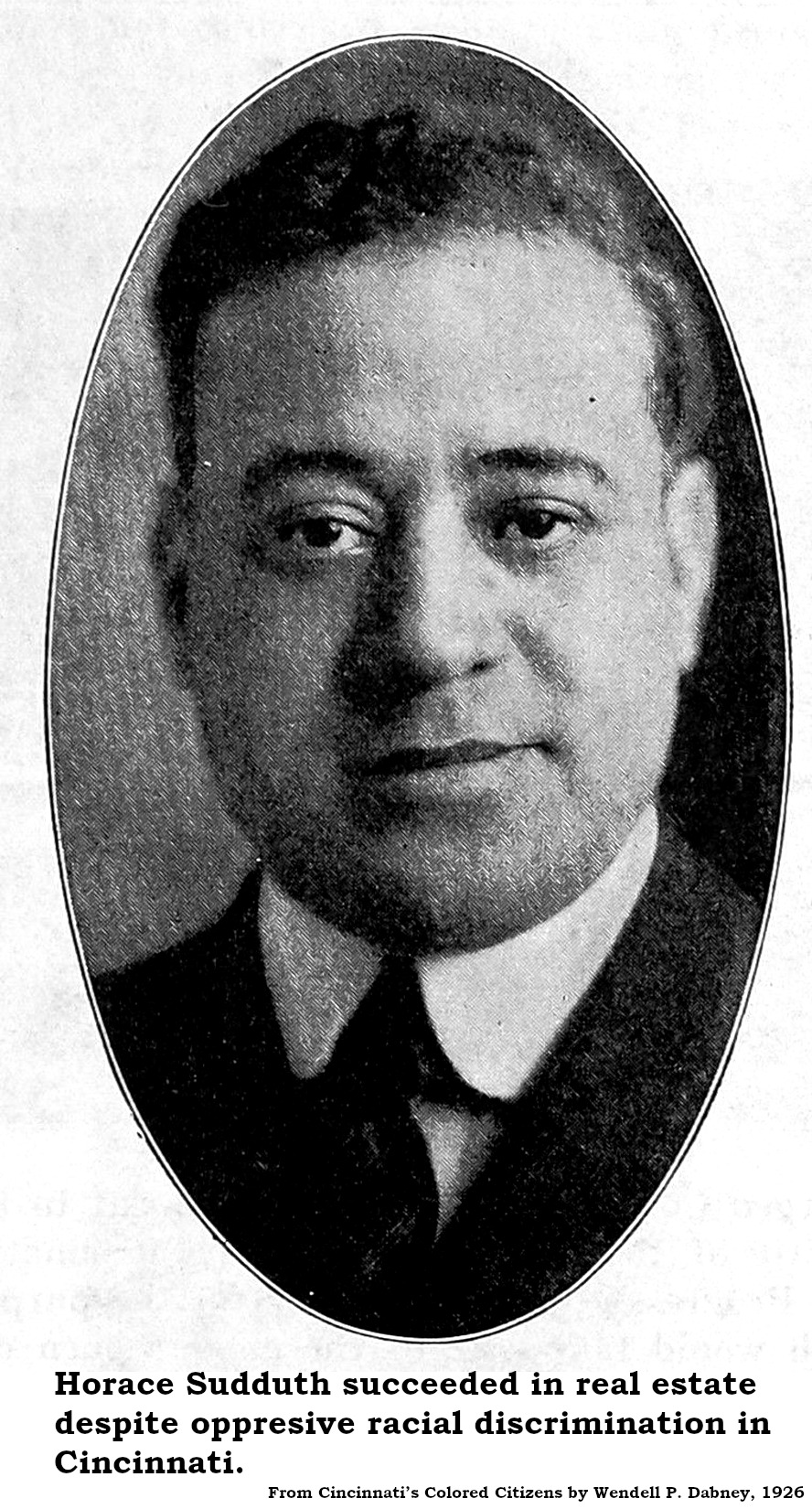
Black Real Estate In A Segregated City On Easter Sunday in 1950, more than 6,000 people toured the brand-new and very elegant Manse Hotel in Walnut Hills. The Enquirer called the Manse “the finest hotel in the United States owned and operated by Negroes.” Because Cincinnati’s downtown hotels were segregated, the Manse for many years accommodated nearly every Black celebrity visiting the Queen City. The Manse was created by Horace Sudduth, a Black man born in Covington who built a solid real estate enterprise in Cincinnati against the considerable obstacles of a very segregated city. Sudduth opened the Creative Realty Company in 1910 on West Fifth Street. His company sold residential property and also provided investment counseling. The secret to Sudduth’s success was his emphasis on service over profits. Sudduth directed his staff to match each buyer with the most appropriate property, and wealth would follow. He counseled his clients to think of real estate as an investment, famously declaring “You do not buy a home like you buy a hat.” By 1950, Time Magazine noted that Sudduth had accumulated a fortune of more than half a million dollars.
Hopple Street Mystery In 1916, a city block’s worth of real estate at the southeast corner of Beekman and Hopple streets was, at least on paper, sold by Charles E. Miller of Northside to Ben Rubenstein, president of the Benn Lumber Company. What, asked the Cincinnati Enquirer [23 July 1916], did Mr. Rubenstein intend to do with that property? Enquirering minds wanted to know because “sources” claimed the land could not be used for storing lumber. Mr. Rubenstein said he had no idea what the land would be used for. He insisted he had no financial interest in the transaction and only allowed his name to be used “as a matter of convenience” for other, unnamed, parties. The Enquirer never discovered who actually owned the land, but Mr. Rubenstein – at least on paper – sold part of it two years later to Hooven & Allison Company, twine manufacturers.
The Park That Became A Castle Don’t believe everything you read on Wikipedia. According to that communally edited resource, Loveland Park was created as a subscription gimmick by the Cincinnati Enquirer. Not true. It was the Cincinnati Commercial Tribune that offered, in 1924, a plot of land along the Little Miami River to anyone who purchased a six-month subscription to the newspaper. These lots were too small for building, measuring only 20 feet wide and 100 feet long. The newspaper played up their virtues as a summer resort because subscribers could pitch a tent and walk to the river. Buyers were mostly wealthy; that half-year subscription ran to $58.50. Many of the original buyers bailed. Lillie Gegner was one. On 12 June 1929, she sold two adjacent plots to Harry D. Andrews. Three months later, Andrews laid the cornerstone for Chateau La Roche, later known as Loveland Castle. The quasi-chivalric organization Andrews founded, the Knights of the Golden Trail, now owns more than 6 acres of land surrounding their castle. The Commercial Tribune created a real estate debacle when they subdivided the former Apgar farm into all those tiny parcels. The stunt properties extend beyond Loveland up into Warren County’s Deerfield Township and lawyers were still trying to sort out land ownership and street dedications well into the 1980s.
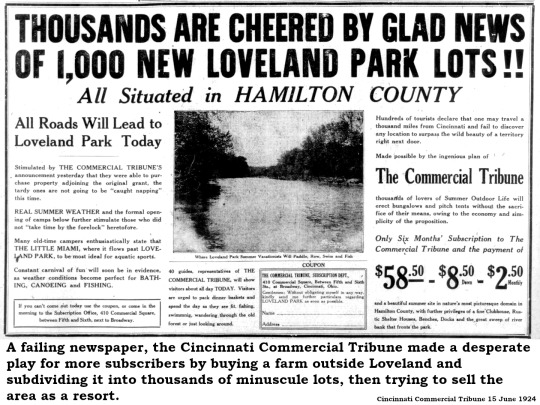
One Bad Apple Cincinnatians were introduced to the title “Realtor” in 1916, when Thomas Ingersoll, national secretary of the Real Estate Exchange, announced to a gathering of Queen City “real estate men” that, henceforth, they would be known by that trademarked title. According to the Cincinnati Commercial Tribune [17 June 1916] Ingersoll claimed “realtor” would “be synonymous with honesty, straightforwardness, and everything nice and pleasant along real estate lines.” Apparently Edna White didn’t get the message. Mrs. White, owner of Edland Realty Co., spent 1954 in court to face charges she had swindled at least 11 of her clients out of $13,000. Plaintiffs testified they had given Mrs. White amounts ranging from $900 to $1,300 as down payments on houses but, when unable to secure enough financing to complete the deals, Mrs. White refunded their money with personal checks that bounced. By the time she was sentenced to one to ten years in the Marysville Reformatory, 22 counts of embezzlement and additional rubber check charges had been added to the indictments.
What’s Hidden In Your Deed? Homeowners in Hamilton County document their ownership of a parcel of land through a deed and that deed commonly references a prior deed, which references an even earlier deed, and so on. Follow that trail and it is common to find a racially restrictive covenant in the original deed to your property, something along the lines of: “No lots either improved or unimproved on the said subdivision shall ever be sold, leased, rented or occupied, except as servants in a household, by any person not of the White or Caucasian race.” Such covenants were declared illegal by the Supreme Court in 1948, but the language persists in the official records. For many years, The Hamilton County Recorder’s office refused to transfer racially restrictive covenants when a property was transferred. That practice was challenged in 1980 over a piece of registered land – property surveyed by and with boundaries guaranteed correct by the state. Removing the covenant could invalidate registered deeds, a land examiner claimed. The court sided with the examiner, but County Recorder John E. Held removed the covenant on his own authority. The Ohio General Assembly finally eliminated all remaining obstacles to erasing such covenants in 1998.
Friends of Joe If you believe your property taxes are too high today, you may appeal to the Hamilton County Board of Revision. Before 1990, there was another, much more expeditious, method to get your property taxes lowered – you made friends with Auditor Joseph L. DeCourcy Jr. That year, an investigation by Cincinnati Post reporters Randy Ludlow and Molly Kavanaugh revealed that DeCourcy and his staff had improperly reduced the tax valuations on more than 1,000 properties, amounting to $1 million in lost tax revenue over the previous two years alone. The improper reductions were recorded on forms initialed “FOJ,” which, sources said, meant “Friend of Joe.” Although DeCourcy claimed to have no idea what those initials represented, he was indicted on 190 counts of reducing the taxes of his friends and political allies and eventually pleaded no contest to lesser charges, receiving a fine and a suspended jail sentence.
#cincinnati real estate#nicholas longworth#horace sudduth#iron chest company#loveland park#loveland castle
8 notes
·
View notes
Text
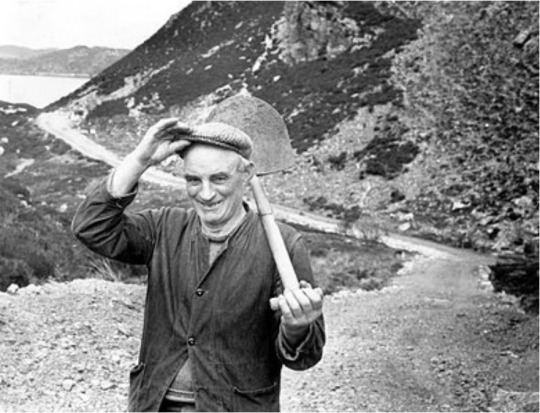
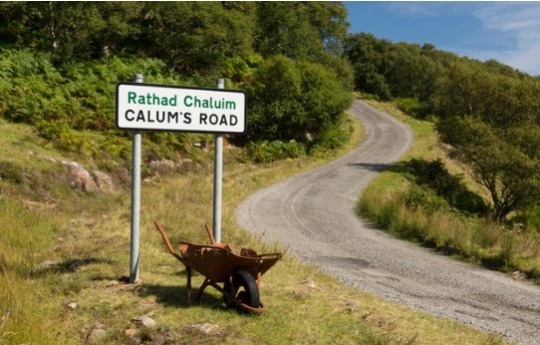

Crofter Calum MacLeod then aged 63 shoulders his shovel after another days work on the road ... his OWN road on 29th April 1973.
Calum was a Local Assistant Keeper of Rona Lighthouse and the part-time postman for the north end of Raasay.
After decades of unsuccessful campaigning by the inhabitants of the north end of Raasay for a road, and several failed grant applications, Calum decided to build the road himself. Purchasing Thomas Aitken's manual Road Making & Maintenance: A Practical Treatise for Engineers, Surveyors and Others for half a crown.
Over a period of about ten years between 1964 and 1974, he constructed one and three quarter miles of road between Brochel Castle and Arnish, using little more than a pick, a shovel and wheelbarrow. Initial blasting work was carried out and funded, to the sum of £1,900, by the Department of Agriculture's Engineering Department, who supplied a compressor, explosives, driller, blaster, and men.
Several years after its completion, the road was finally adopted and surfaced by the local council. By then, Calum and his wife, Lexie, were the last inhabitants of Arnish.
Rather amusingly Calum didn't drive any further south than Bochel near Tomnavoulin as he never held a drivers licence!!!
Sadly, despite only being completed in the 1980s, the road is already falling into disrepair as it has been left without maintenance
The third pic shows a Commemorative Cairn that reads: "This former footpath to Arnish - a distance of 1.75 miles - was widened to a single track road with passing places and prepared for surfacing by Malcolm MacLeod MBE”.
43 notes
·
View notes
Text

Name: Raul Moreno Martín Species: Spellcaster Occupation: Surveyor Age: 27 Years Old Played By: Tapir Face Claim: Miguel Bernardeau
"Miss one sigil and you’ll transmute yourself into flesh furniture. No pressure, initiate."
Raul had been destroying evidence and dodging questions from other local covens for a year since the Pacto Áurico’s grand experiment unleashed a shockwave in Toledo’s astral plane like an earthquake thundering through an ocean trench. Yet, Raul hadn’t gotten better at answering those questions for himself, He couldn't even be sure if the ritual had failed, or if sheer audacity had left them unprepared for the consequences of actually succeeding.
Within the gilded and hushed halls of the Pacto Áurico, or Auric Covenant, Raul had learned what the masses called ‘magic’ was just chaotic energy humans could force in useful patterns through equivalent sacrifice and ritualized formulas the ignorant called ‘spells.’ Raul initially didn’t find it weird that his mother visited distant worlds in her dreams or that dad and grandpa never met an ominous artifact they didn’t immediately adore.
But the divide between the occult and outside eventually hit as he tried to divide time between, school, friends, sports, parties, hobbies, love, and his parent’s arts. Each deeper circle of thaumaturgy required exponentially more time to decipher, experiment, and refine. Some rites even required Raul to offer up parts of his inner self. Raul loved his friends and day life, but each new intoxicating rush of unnatural power seemed to sweep him farther out to sea.
Years later, Raul had descended with his squad of the ritual teams beneath the arches of San Ginés and into the Caves of Hercules and the forbidden Casa de los Candados beneath Toledo. The Auric Covenant’s path of shaping chaos through rites and sacrifice had forged Raul into a formidable sorcerer, but demanded such all-consuming focus that Raul had been more concerned on proving himself than questioning whether the coven’s latest grand ritual had gone too far. It was only after archeological layers of Castilian, Almohad Caliphate, Visigoth, Roman, and ancient Iberian ruins gave way to alien architecture that was already ancient in humanity’s stone age that Raul began to realize the enormity of what the Auric Covenant’s inner circle intended. But by then, reality was already bleeding.
All Raul knew for certain was that the cascading vortex left more than just physical wounds on those who’d survived a desperate attempt to stabilize that massive imbalance of energy. As they’d all picked up the pieces and tried to remake the wards and magical reservoirs that’d been destroyed by the ritual’s backlash, Raul slowly realized something leeching his lifeforce after each invocation or transmutation. It was tiny at first, but like internal bleeding, seemed to rip deeper the more power he wielded. None of his family and friends seemed to be faring any better, each with their own individual scars and consequences. Raul chose to focus on helping his family and coven rebuild to avoid the deepening questions. A long trail of false leads and failed cures eventually lead to a magically rich locus on America’s east coast, just one more short stop before everything went back to normal.
Character Facts:
Personality: Bold, loyal, ambitious, ingenious, cagey, grasping, warped, disillusioned
Raul rarely drops his guise as a cheekily clueless civilian fixated on maps, swimming, and evil buildings.
Raul tends to have cycles of intense hyper-achievement followed by crashing and burning.
Pop culture references and social subtlety tends to bounce off Raul’s skull.
Raul doesn’t care about the species or morality of business associates. Only the mission matters.
Raul excels at the precise geometric patterns needed for occult diagrams, but is otherwise a terrible artist whose class presentations gained infamy for being unintentionally surreal.
Raul received a wound to the soul during a ritual.
8 notes
·
View notes
Text
Incident Report #1065-A
Date Filed- 14/12/14
Date of Initial Incident- 7/12/14
Archivist- Opalton, Emily
On the night of December 7th, during a routine surveillance of the Beltrami county coldspots in northern Minnesota, the assigned Observer happened upon an untapped live video feed coming from a small emergency clinic located on the bend of a highway. The feed was attached to the clinic’s CCTV security camera system. Initial observation revealed a series of seemingly supernatural events visible across the entirety of the building, which prompted further escalation.
The assigned Surveyor reviewed the live tape for a 24 hour period and found Epsilon level activity between the hours of 23:00 and 2:00 based on the visuals alone. This included infestations of several manifested shade entities, evidence of poltergeist and phantom activity, object possession, non-euclidian interior design, and foresight manifesting memetics. See Incident Report #1065-B for a further expanded list of activity identified during this period. Following the confirmation of notable supernatural happenings in the area, the Surveyor probed local rumors and speculation for signs that information on the events had breached into public consciousness, however no such evidence was found. Thorough investigation revealed that no discussion surrounding the clinic was related to the supernatural in any way. Patients who had been present the day of the surveyed activity reported nothing out of the ordinary during or after their stay, nor did any of the clinic’s staff. Temporal phenomena were ruled out via an extensive cross referencing of the clinic’s deed, land rights, yearly taxes, and employee records, however it was noted that the building’s layout was mildly inconsistent. No windows were observed on the exterior of the building, and yet several cameras showed position accurate windows located on the interior of the clinic.
Following the closure of the Surveyor’s investigation on December 13th, 2014, the incident was marked Unresolved and on Yellow Watch.
20 notes
·
View notes
Text
0 notes
Text
Marten Larue loredump
500 years ago, the planet Marten comes from was invaded by SecComm (lots of canon lore for them, but most of it's irrelevant. They're space nazis). SecComm chose a large plateau as their staging ground, as it was isolated, defensible, and populated by low-tech nomads. They easily squashed the local population, and set about spreading their war and influence across the planet.
However, the people who had been brutally and casually subjugated still existed, and tried to rebel. This rebellion was immediately crushed. As was the one after that, and the one after that. These people, whose names and history are lost to time, must have looked around, seen their culture being sandblasted away, and become desperate. They began trying more cutthroat, underhanded, and brutal tactics, eventually resorting to severely punishing failure within their own ranks, often consigning these people to the "Fodder Corps".
Then, by some miracle, SecComm left. Almost overnight, they pulled back from the planet and retreated into space. The leaders of their rebellion, in their current iteration known as the TDP, likely in some state of shock, decided that their efforts had defeated SecComm. Therefore, the brutal and unforgiving internal politics of their rebellion should be the model for their future society they would build from the ashes of their former homeland.
What TDP stood for is lost to time (verbally it's referred to as "tedepon" but it's never spelled that way, nor is it ever referred to verbally by spelling out the acronym), but it exists now as a society built around the concept of "failure" as the chiefest and most egregious sin. The punishments have become far more complex and varied, but the core principle remains the same, and is used to stratify society into those who have failed, those whose ancestors have failed, and those who present themselves and perfect and beyond any sort of failure.
Marten Larue is born into this society to a family of dirt-poor laborers. Knowing their son had a gift for machines, his parents did everything in their power to keep him away from the many shipbreaking, salvaging, and industrial jobs that TDP built its economy off of, as it would paint a target on his back. Instead, he worked in a shrimp farm and spent his off-hours wandering the high-altitude tundra, looking for missed scraps.
over the next five years, he put together some of a mech. He had no dreams to compete in the mech arenas, but what little he had seen and heard of these competitions gave him a deep desire to build a machine worthy of such titanic clashes. Then, one day, he discovered the greatest find of his life.
A mech frame Marten didn't recognize lay mostly buried in the frozen earth, tucked away at the bottom of a little-known ravine. He dug it up, removed the ruined limbs, and restored the surprisingly well-preserved body. Attaching the parts from his ongoing project, his mech was almost complete! Little did he know, the land he had taken this salvage from had already been claimed for salvage, and when a surveyor noticed a conspicuous hole, Marten was tracked down and arrested for stealing.
As punishment for his crime, he would enter the service of the man who he had stolen from: a member of the ruling elite. This man assigned his mech the name Centihumeros, or "hundred shoulders." The hundred shoulders belonging to the founders of TDP, and whose victory had allowed for all that had come afterwards. The hundred shoulders upon which more praise would be heaped, if Marten were to achieve any victory at all in the arena in an incomplete mech made from scrap. And just before his first fight, Marten was branded with his gladiator's mark: upon his upper back reads "pénitence par la victoire."
In his first battle, Marten almost died. He had been given a crash course in piloting, but actual combat was completely different. That is until he accidentally activated his mech's signature ability: a portal straight to a star. A beam of stellar matter shot across the arena, melting an enormous hole straight through his opponent and presumably killing her in an instant.
The gladiatorial arena in TDP has a lot of money wrapped up in it. Gladiators are typically transported between arenas in secret, to prevent kidnapping of star warriors by competing lords. But such banditry is still fairly common. So when Marten and his mech were transported to the next arena and his caravan was attacked, it wasn't particularly unheard of. But the botched nature of this attack left Marten with the opportunity to climb over to the Centihumeros and escape. He returned home, stuffed his mother and one of his brothers alongside him in the cramped cockpit, waved a tearful goodbye to the rest of his family, and ran.
Two years later, after evading the authorities across a continent, several borders, and half an ocean, a distress beacon is detected by a passing hovercraft. A mech is barely holding this beacon above the waves. The craft picks up this mech, and ferries it to its destination: the island of Dammerund. On this island is a school. He will enroll in this school, first getting into the engineering track and then getting bumped into the mech-piloting track. He would rather be an engineer, but feels obligated to do everything in his power to reunite with the rest of his family and rescue them from his former country.
3 notes
·
View notes